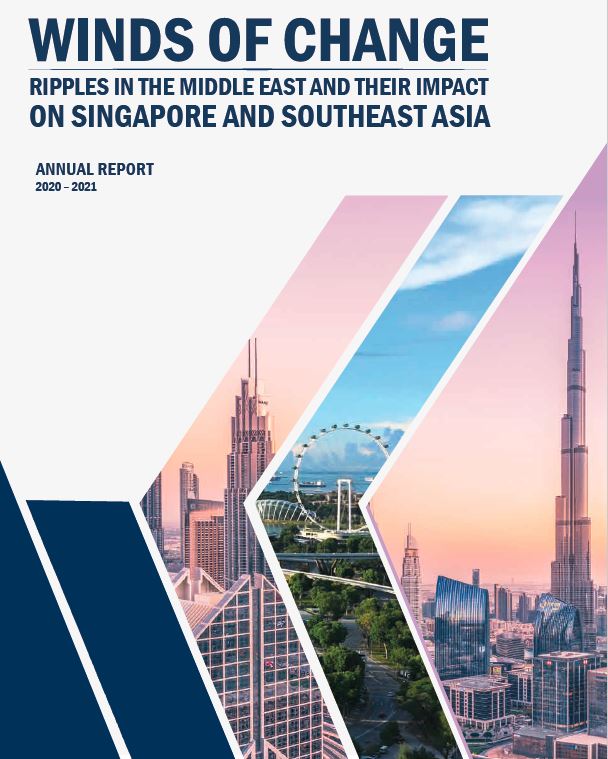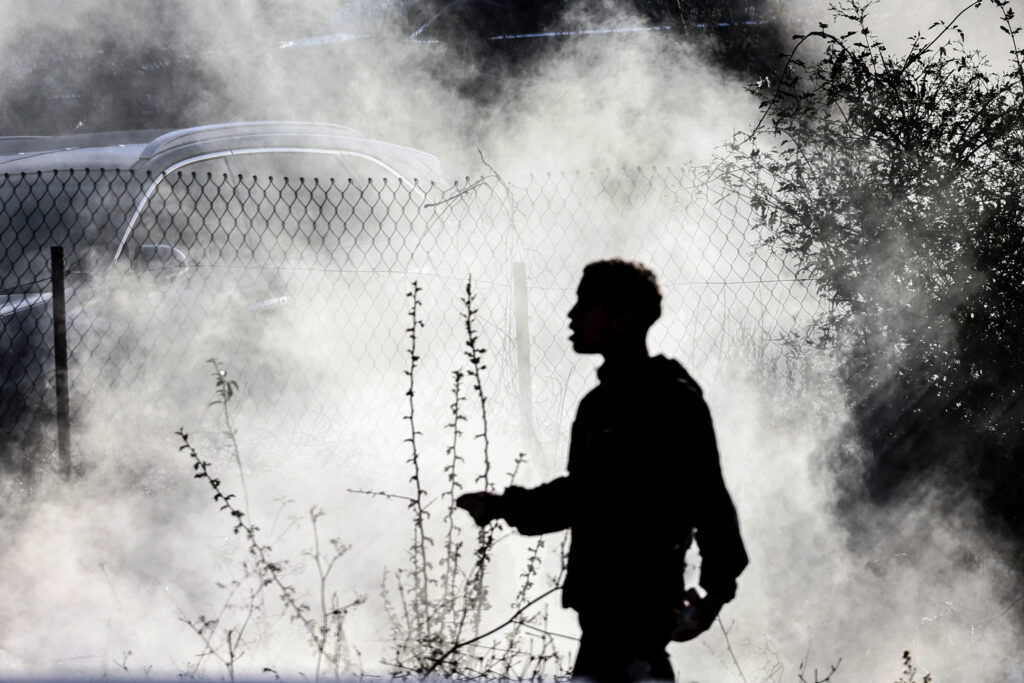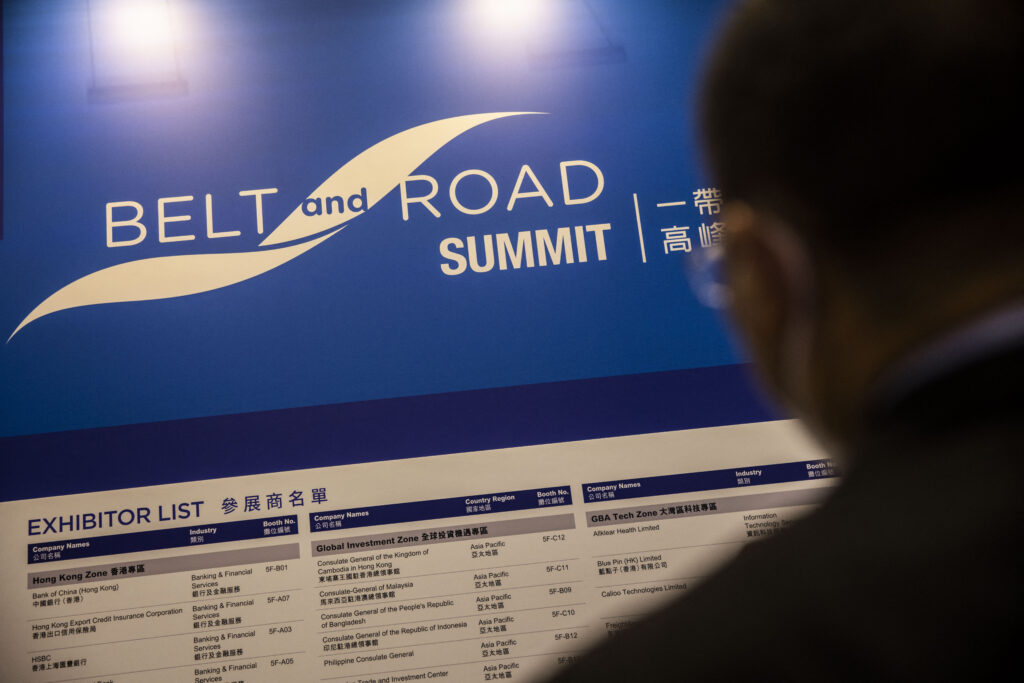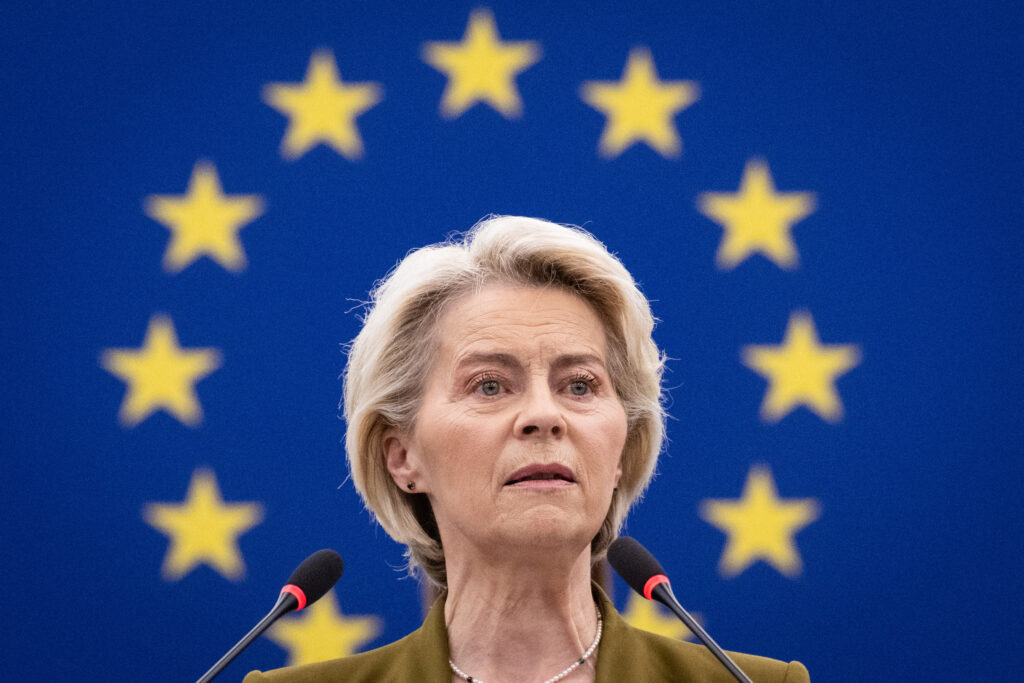Download a copy of our Annual Report here.
Chairman’s Message
MEI’s Instrumental Role in Decoding Change in the Middle East
At a time when the Middle East is in a more than usual state of change, it is timely for the Middle East Institute (MEI) to keep firmly in mind that our essential mission is to study the connections between the Middle East and our region, and the impact of the changes underway in the Middle East on our own region.
Our study of the Middle East is thus instrumental. There isn’t, and I doubt there will ever be, great interest by our key stakeholders in the Middle East in and of itself. This is a fact of life all MEI staff should never lose sight of because your relevance, and ultimately your salaries, depend on it.
“Our region” is to be understood as what is now referred to as the “Indo-Pacific”. Our specific emphasis is on South-east Asia; followed by North-east Asia, particularly China; and South Asia, particularly India. Within South-east Asia, our emphasis should be on Malaysia and Indonesia.
There are two broad categories of change that we should consider.
Firstly, although not necessarily as our main priority, geopolitical stability. Concerns arise because the US – the traditional security provider – is regarded as being in retreat from the Middle East. This is an exaggeration. There is no sign of the 5th Fleet leaving Bahrain, or the USAF leaving Qatar. But the US is certainly recalibrating its engagement of the Middle East to de-emphasise the role of its ground forces and scale back the ambition of its goals. This is not the same thing as a “retreat”, and since the use of ground forces and the vastness of American ambitions were serious mistakes in the first place, recalibration is no bad thing.
The drawdown of US ground forces nevertheless creates new complexities and instabilities which could spill over to our region in some way. At very least, what happens in the Middle East could affect general perceptions of great power dynamics, as the loose metaphor of the US being in “retreat” indicates. As great power competition is as much psychological as material, and as perceptions have material effects, we should therefore endeavour to be as clinical as possible and not just repeat the fashionable tropes of the moment, as too many academics often do. It is my impression that this proclivity may be somewhat more prevalent in Middle East studies, and in the study of Asia generally, than in other fields.
Some commentators regard China as filling the role that the US once played in the Middle East. This is a proposition that should not be dismissed, but has to be treated with great caution, as must be the idea that the ebb and flow of the policies of major powers leave “vacuums” that other major powers fill. This is another loose metaphor, rather than a rigorous analytical category. It is not obvious that any Indo-Pacific country – China included — has either the political will or capability to use ground forces, or any sort of military force, on the same scale as the US, or for the same goals. In fact, it seems to me rather improbable that any country will do so.
This has serious implications because the hard fact is that, more than in other regions, military force is the chief currency of statecraft in the Middle East. Successful diplomacy in the Middle East, more than in other regions, depends on the willingness to deploy and use force on the ground. What does this mean for the region and other regions influenced by the Middle East if no major power is willing to do so?
China’s approach to the Middle East contains inherent contradictions, at least potentially. The Middle East – or at least the parts most relevant to Singapore
— is separating along the axis of confrontation with Iran, with Turkey trying to preserve autonomy to manoeuvre in all directions. This is the larger meaning of the Abraham Accords and the reason they will, despite all the internal stresses caused by the Palestinian issue, hold together. We should neither ignore nor be distracted by recent outreaches by some Gulf states to Iran, as such hedging behaviour is only to be expected when geopolitics is in flux. Proxy conflicts have been ongoing in Syria and Gaza for some time. Lebanon will eventually be drawn in. Unless Iran gives up its nuclear ambitions – which is highly improbable
– it is not clear that a major war can be avoided. Whether or not the JCPOA can be revived is a second-order issue, at best postponing a war.
The stresses and contradictions of China’s relations with Saudi Arabia, Iran, Turkey, and Israel are easier to manage so long as Beijing defines its interests in the Middle East primarily in economic terms. But can it? From time to time, Chinese leaders make statements that seem to indicate larger geopolitical ambitions in the Middle East. Foreign Minister Wang Yi’s offers to mediate an end to the conflict between Israel and Hamas during Operation Guardian of the Walls were a recent example. But he was ignored by all parties. It was not until President Joe Biden intervened that a ceasefire was reached. Are some of Beijing’s statements about a geopolitical role more a reflection of the psychological dimension of US-China competition than serious geopolitical intent? How successful are they? How do we distinguish serious intent from agitprop?
That there is some degree of serious intent should not be doubted. The Middle East is China’s “far west”, and the gateway to the politically sensitive and troubled region of Xinjiang. China has interests in Afghanistan threatened by the American pull out. Mr Wang simultaneously criticising the US as the source of Afghanistan’s problems and calling on it to guarantee a smooth transition in Afghanistan betrays some of the concerns and contradictions of China in the Middle East.
Still, China’s immediate geopolitical interests in the region are primarily maritime and concerned with protecting energy supply routes. In this respect, a bigger Chinese geopolitical role is just a matter of time. Can a maritime role be insulated or separated from a role on land? What will be the balance between land and sea, and between economics and geopolitics in China’s approach, bearing in mind that Xi Jinping’s signature Belt & Road Initiative encompasses both land and sea and both economics and strategy?
The second and more immediately compelling category of issues has to do with attempts by some Middle Eastern countries to reorient or reform – choose your own terminology – their economies away from over-dependence on energy. Our interest here is two-fold. There may be economic opportunities to be tapped. But more crucially, economic change necessarily entails political, cultural and social changes, which must include the interpretation of religion. It is well-nigh impossible for them to transform their economies without these broader changes, and our primary interest is to study how such changes may (or may not) influence how Islam is understood and practised in the Middle East and how these changes may (or may not) influence how Islam is understood in South-east Asia.
I will explain our interest in more detail later, but before I do so, it must be pointed out that in this context, the term “Middle East” is an abstraction that needs greater resolution for MEI to define its interests with clarity and focus. There are at least three broad categories of countries in the Middle East.
First, broken and failed states: Yemen, Libya, Syria, Iraq, and now, Lebanon. These countries are beyond anyone’s help and are of no interest to MEI, except in so far as developments in them influence broader currents. In theory, there may be economic opportunities arising from reconstruction, and, of course, Iraq has oil. But reconstruction depends on first putting Humpty Dumpty back together again, and who will seriously do so?
Perhaps China may try, but that only adds to Beijing’s geopolitical complications. There are far more attractive and less risky investment opportunities elsewhere in the Middle East and in other regions of the world.
Second, states that are in reasonable working condition, some better than others. These would include most of the Arab states, minus those in the first category. MEI’s interests here focus sharply on the Gulf and, in particular, Saudi Arabia, the UAE, Qatar, and Oman. Saudi Arabia is of particular importance because of its size and influence in the Muslim world. Egypt and Jordan are important because of their strategic position and because what happens in these countries influences what happens elsewhere in the Middle East. The Maghrib countries are of peripheral concern.
Middle Eastern economic opportunities cluster in this second category. It is in our interest to do what we can to contribute to the transformations the states are attempting. We should not over-estimate our (or any outside power’s) ability to influence these transformations and Singapore’s, and more generally, Asia’s, experience is not directly transferable. But MEI ought to study what aspects could be useful and how they need to be adapted, because the long-term stability of the Gulf, and hence the long-term security of energy supplies, depends on the success of the transformations.
The third category, of the non-Arab Middle Eastern countries Israel, Iran and Turkey, is a mixed bag. Our relationship with Israel is well established and crucial. Israel’s connection with Singapore’s security and defence is now well known, at least in broad outline. After the Abraham Accords, this is not something we need be overly shy about. Israel too is changing, and it remains to be seen if the recent change of government signifies any change in the broader trajectory of Israeli politics and society. I doubt it, and what this means for our important bilateral ties over the long-term needs to be studied. But the Israeli economy is as creative and robust as Israeli politics, which is dysfunctional. Bilateral relations now extend well beyond defence and security. They are multi-dimensional, with a great deal of economic and other opportunities still to be tapped if only we have the wit to recognise them and the courage to seize them.
Iran and Turkey ought to be doing well but are not, primarily due to economic mismanagement. In Turkey’s case, this is probably a passing phenomenon rather than a structural condition. In any case, Turkey is still a substantial economy playing important roles in the Middle East and Central Asia that we should better understand. Iran’s long-term trajectory is downward.
There are fundamental decisions about Iran’s priorities to be made, and only Iranians can make them – or more precisely, only the mullahs and the Islamic Revolutionary Guard Corps can make them.
As previously mentioned, beyond economics, Singapore and Southeast Asia have an additional and even more crucial interest in the transformations being attempted by these countries. At the end of the 1990s, Singapore began to notice that Islam as it was traditionally practised in South-east Asia was being substantially transformed by Wahhabist or Salafist influences from the Gulf, a process popularly known as “Arabisation”.
This is not a relatively straightforward question of Gulf states or Gulf NGOs funding the propagation of Wahhabist Islam, and the mechanisms of transmission and their implications need to be better understood and in greater detail. This will require MEI to collaborate with other research organisations in Singapore and the region, or even further afield.
Traditional Islam in Southeast Asia was highly syncretic, incorporating elements of Hinduism and Buddhism and even older shamanistic practices. But under the influences from the Gulf, this open and inclusive idea of Islam was turning inwards, becoming exclusive and intolerant, shutting itself off from other interpretations of Islam and other religions.
At about the same time in the late 1990s, we uncovered and broke up a terrorist network, Jemaah Islamiyah (JI), plotting an attack in Singapore. JI’s aim was to establish a caliphate in South-east Asia. But dangerous as it was, terrorism was not the primary concern about the “Arabisation” of Islam in South-east Asia. “Arabisation” does not necessarily lead to militancy, although the intolerance it fosters may contribute to it. Relations between Hamas and some sections of Malaysia are well known, as are those between Erdogan’s Turkey and some in Malaysia. What are Malaysia’s relations with Iran, and how might they develop? These connections, among others, need to be studied in greater detail.
More potentially damaging in the long-term was the impact of “Arabisation” on the social cohesion of Singapore, where Muslims form 14 per cent of our population, and on our immediate neighbours, Malaysia and Indonesia, in which Muslims are a majority. All Southeast Asian countries are plural societies – multi-ethnic and multi-religious, with a very close correlation between ethnicity and religion.
As the texture of their Muslim communities changed, turning inwards and separating themselves from other communities, so did the politics of Malaysia and Indonesia change, straining the cohesion of their societies. If social cohesion and social trust are broken, they may never be restored.
The social space for other religions has considerably narrowed in Malaysia, with racial stresses becoming more pronounced. Malaysian politics is increasingly influenced by Islam, as with Indonesian politics. There have been attacks against non-Muslims and Muslims considered “deviant” in Indonesia. Sunni-Shia sectarian tensions have been introduced in Malaysia and Indonesia, even though almost all South-east Asian Muslims are Sunni.
President Jokowi, who is from Solo – the centre of traditional Indonesian Islam – is pushing back against the “Arabisation” of Islam in Indonesia and its deployment for political purposes by promoting traditional Indonesian Islam, which he has dubbed “Islam Nusantara”. But he faces a fundamental paradox. To garner the political power to do so, he must himself use Islam for political purposes. Whether the distinction between different variants of Islam can be maintained in this complicated dynamic is an open question. Nor is it clear that his successor will be as committed to this endeavour.
Singapore cannot be insulated from these developments. Fortunately, the “Arabisation” of Islam in Singapore has not reached the extremes it sometimes does in our neighbours, and Singapore’s secular organising principle of multi- racial meritocracy remains at the core of our politics and society. But defending it requires constant alertness and state intervention, and not only against Islam. Maintaining the secular and multi-cultural character of Singapore is an existential issue to us.
The struggle to define Islam in Southeast Asia will have profound consequences for the entire region’s future. The ability of the Gulf states to transform themselves will have a significant impact on this struggle, and the impact will be even greater should they fail. What happens in Southeast Asia has consequences for the Indo-Pacific as a whole.
It is therefore in the strategic interest, not just of Singapore but all other Asian countries, to do what we can to help them succeed. MEI’s role in this is to help policymakers better understand the dynamics of the processes underway. This in turn requires our researchers to resist the temptations of what may be abstractly interesting, but of little consequence to this core issue.
Bilahari Kausikan





